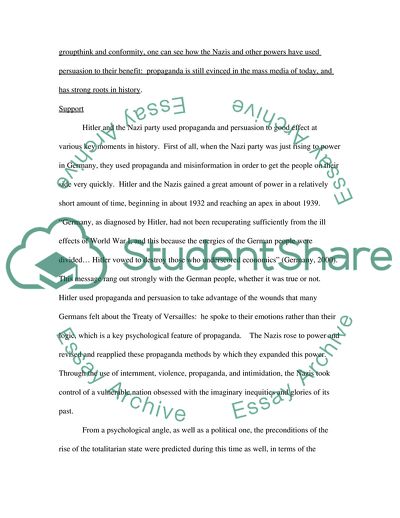Cite this document
(Persuasion and Propaganda Assignment Example | Topics and Well Written Essays - 2500 words, n.d.)
Persuasion and Propaganda Assignment Example | Topics and Well Written Essays - 2500 words. https://studentshare.org/history/1724690-persuasion-and-propaganda-psychological-techniques-used-to-influence-individuals-example-nazi
Persuasion and Propaganda Assignment Example | Topics and Well Written Essays - 2500 words. https://studentshare.org/history/1724690-persuasion-and-propaganda-psychological-techniques-used-to-influence-individuals-example-nazi
(Persuasion and Propaganda Assignment Example | Topics and Well Written Essays - 2500 Words)
Persuasion and Propaganda Assignment Example | Topics and Well Written Essays - 2500 Words. https://studentshare.org/history/1724690-persuasion-and-propaganda-psychological-techniques-used-to-influence-individuals-example-nazi.
Persuasion and Propaganda Assignment Example | Topics and Well Written Essays - 2500 Words. https://studentshare.org/history/1724690-persuasion-and-propaganda-psychological-techniques-used-to-influence-individuals-example-nazi.
“Persuasion and Propaganda Assignment Example | Topics and Well Written Essays - 2500 Words”. https://studentshare.org/history/1724690-persuasion-and-propaganda-psychological-techniques-used-to-influence-individuals-example-nazi.


